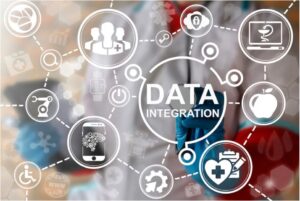There are 2.5 quintillion bytes of data created each day at our current pace. Not only is there more data, but there are more sources—and they’re often scattered. To make this data usable, we need to focus on how it’s presented to end users and how fast it can answer their questions.
Understanding data is critical for making smarter decisions that boost business performance. From profitability and productivity to customer satisfaction, good data modeling helps business leaders get clear answers to the questions that matter most.
What is Data Modeling?
Data modeling is identifying, analyzing, structuring, and communicating data requirements in a clear format. It helps teams understand and manage their data assets better.
Stronger data models = more substantial business value.
To get there, you need to:
- Tie the model directly to business goals
- Use tools to speed up and simplify the process
- Keep it simple and practical
When done right, any business, big or small, can unlock real benefits. The process typically starts from understanding business needs and ends with building the database.
Better Data Modeling leads to greater Business Intelligence.
Today’s businesses are relying on data models to tackle real challenges. At the heart of every BI and analytics team, data models serve as the foundation. They:
- Help align business and tech teams
- Enable smarter reporting and analytics
- Support faster, better decision-making
With clean and well-structured models in place, the jump from raw data to real insights becomes much easier.
Data Modeling creates an ‘Active Inventory’ of Data Assets
Know what data you have
Visualize your databases and systems clearly
Know what your data means
Bridge the communication gap between business and IT
Support consistency
Build unified structures and encourage stronger data governance
That said, it’s not always straight forward. A data model for one department usually won’t work for another. You need a solid understanding of your organization’s structure and workflows. Using individual tables for facts (like sales numbers) and dimensions (like product categories) helps make the model faster to analyze and easier to update over time.
What Data Modeling Really Does?
Gathers business requirements
(Analyze data, identify key relationships)
Creates various models
(Conceptual, logical, and physical)
Supports application development
(Define app requirements, build or integrate apps, deploy them)
Data Modeling in Business Intelligence
As mentioned, businesses lean heavily on data models to solve real operational challenges. BI and analytics teams rely on business-driven models to:
- Align goals between tech and business
- Build the right database structures
- Generate useful reports and dashboards
- Provide meaningful insights for decision-makers
Whether you’re using Excel dashboards, Power BI, or Tableau, a good data model is what makes your data work for you.
Why does it matter?
- Accurately represents all the data objects your system needs
- Gives database developers a blueprint to build on
- Helps structure your data from concept to physical implementation
- Flags missing or duplicate data early
- Makes IT upgrades and changes faster and cheaper
- Enables full automation
- Supports a complete architecture strategy
- Powers advanced data visualizations and insights
Data modeling isn’t just a technical task, it’s a strategic move. When done right, it brings clarity to your data, aligns teams, and drives smarter decisions across the board. It lays the groundwork for strong BI, effective reporting, and meaningful insights.
Whether you’re a growing business or managing complex systems, investing in the proper data modeling approach helps turn scattered data into a real competitive edge. It’s not about collecting more data—it’s about making the data you already have work for you.







